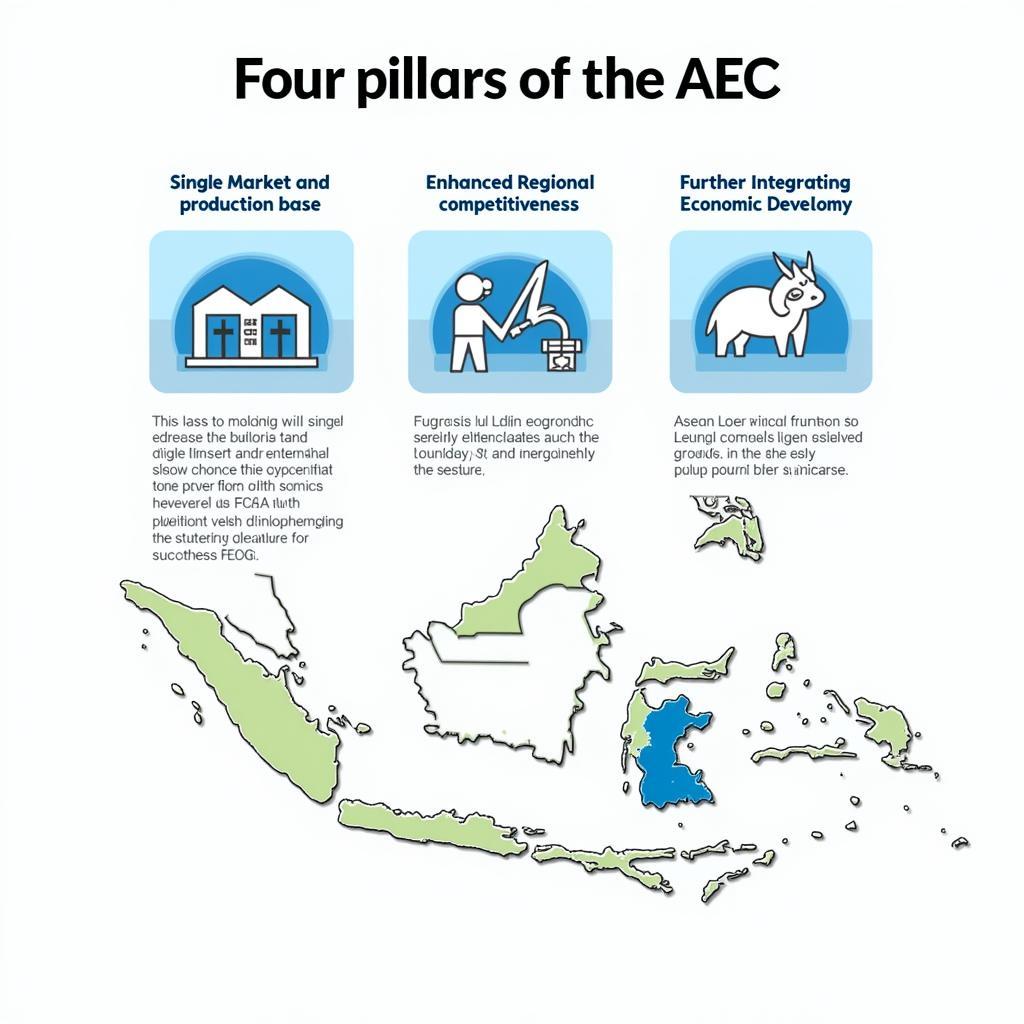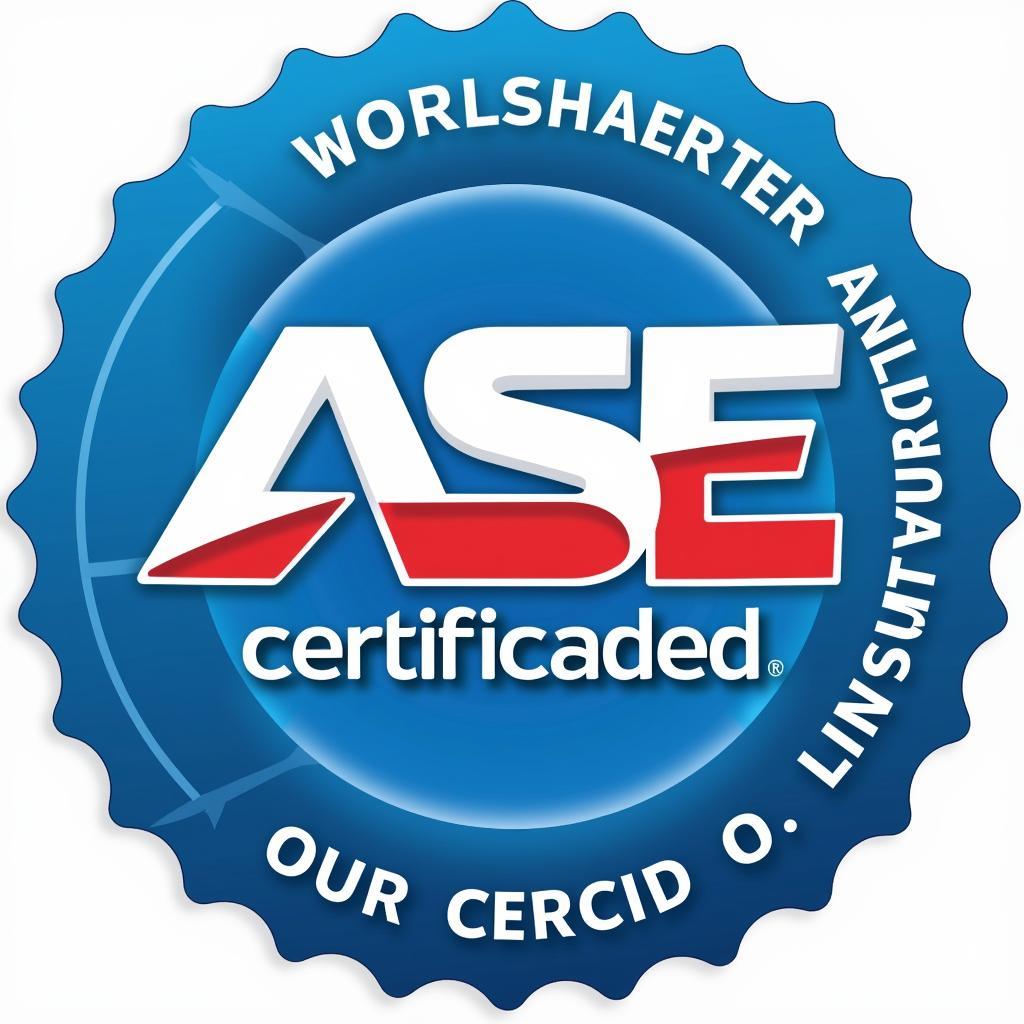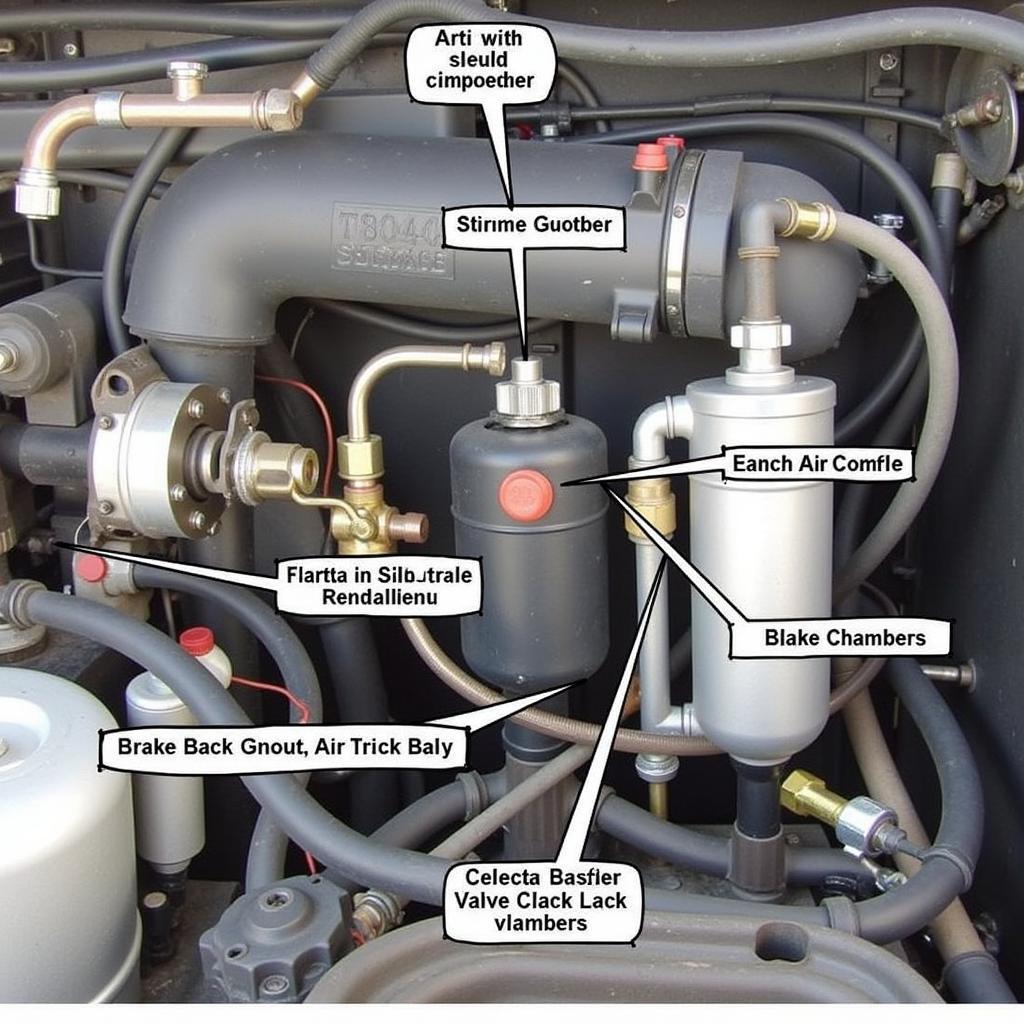The Aec Asean Economic Community 2015 marked a significant milestone in Southeast Asia’s journey towards regional integration. This ambitious project, officially launched on December 31, 2015, aimed to transform the ten member states of ASEAN into a single market and production base, characterized by the free flow of goods, services, investment, skilled labor, and freer flow of capital.
The establishment of the AEC in 2015 was predicated on four key pillars: creating a single market and production base, enhancing regional competitiveness, promoting equitable economic development, and further integrating ASEAN into the global economy. These pillars aimed to leverage the diverse strengths of each member state, fostering a dynamic and interconnected regional economy. One crucial aspect of this integration was the reduction of tariff and non-tariff barriers, facilitating smoother cross-border trade and investment. The AEC 2015 also emphasized the importance of harmonizing regulations and standards across the region, streamlining processes and promoting greater transparency.
Understanding the Four Pillars of the AEC
The four pillars represent the core principles guiding the AEC’s development. Let’s explore each one in more detail:
- Single Market and Production Base: This pillar focuses on creating a unified market where goods, services, investment, and skilled labor can move freely. This includes eliminating tariffs and non-tariff barriers, streamlining customs procedures, and harmonizing product standards. The goal is to create a level playing field for businesses and consumers across the region.
- Enhanced Regional Competitiveness: Recognizing the importance of global competitiveness, this pillar emphasizes improving infrastructure, developing human capital, fostering innovation, and promoting entrepreneurship. The AEC aims to position Southeast Asia as a major player in the global economy by enhancing the region’s overall productivity and efficiency.
- Equitable Economic Development: Acknowledging the varying levels of development within ASEAN, this pillar aims to reduce disparities and ensure that all member states benefit from regional integration. This involves targeted initiatives to support less developed countries, promoting inclusive growth, and addressing regional imbalances.
- Further Integrating ASEAN into the Global Economy: This pillar emphasizes strengthening ASEAN’s external relations, engaging in free trade agreements with other countries, and participating actively in global economic forums. The goal is to enhance ASEAN’s voice on the world stage and attract foreign investment into the region.
After this initial phase of implementation, several reviews have been conducted, leading to adjustments and further refinements to the AEC blueprint. For instance, reviews on products like ASEA Redox Supplement Benefits have shed light on the complexities of regulating health products in a unified market.
 AEC ASEAN Economic Community 2015 Four Pillars
AEC ASEAN Economic Community 2015 Four Pillars
What were the challenges and opportunities of the AEC 2015?
The AEC 2015 presented both significant opportunities and challenges. While the potential for economic growth and regional integration was immense, member states also faced the complex task of navigating diverse interests and priorities.
Opportunities:
- Increased Market Access: Businesses gained access to a larger consumer base and could expand their operations across the region.
- Foreign Investment Attraction: The AEC created a more attractive investment destination for foreign companies, leading to increased capital inflows.
- Job Creation: The integration of markets and increased economic activity spurred job creation across various sectors.
- Economic Growth: The AEC facilitated greater trade and investment, which contributed to higher economic growth rates for member states.
Challenges:
- Implementation Gaps: Difficulties arose in fully implementing the AEC blueprint across all member states, particularly in areas like non-tariff barriers and regulatory harmonization.
- Development Disparities: Addressing the significant development gaps between member states remained a challenge, requiring targeted interventions and support for less developed economies.
- Capacity Building: Building the necessary institutional capacity and human resources to effectively manage the integrated market proved crucial.
- Competition: Businesses faced increased competition from regional and international players, requiring them to adapt and innovate.
 AEC Challenges and Opportunities 2015
AEC Challenges and Opportunities 2015
The AEC 2015 also impacted specific sectors like healthcare. Reviews on products like ASEA Redox Reviews 2020 demonstrate how the AEC framework influenced consumer access to health and wellness products. Furthermore, the harmonization of regulations, though challenging, aimed to create a more transparent and standardized market for such products. Similarly, the ASEA Renu 28 Gel Reviews highlight the increasing cross-border trade in consumer goods facilitated by the AEC.
What is the future of the AEC?
The AEC 2015 laid the foundation for deeper regional integration in Southeast Asia. Ongoing efforts focus on strengthening implementation, addressing remaining challenges, and adapting to the evolving global landscape. The AEC continues to evolve, with new initiatives and strategies being developed to further deepen economic cooperation and integration. The future of the AEC lies in its ability to adapt to dynamic global circumstances, leverage technological advancements, and foster greater inclusivity to ensure that all member states benefit from the shared vision of a prosperous and interconnected Southeast Asian region.
 Future of AEC ASEAN Economic Community
Future of AEC ASEAN Economic Community
The growing interest in health and wellness also presents opportunities for businesses like ASEA, as evidenced by reviews such as ASEA reviews candida and ASEA Redox Gel reviews.
Conclusion
The AEC ASEAN Economic Community 2015 represents a transformative chapter in Southeast Asia’s history. While challenges remain, the AEC continues to drive progress towards regional integration, fostering economic growth, and promoting a more interconnected and prosperous Southeast Asia.
FAQ
- What does AEC stand for? AEC stands for ASEAN Economic Community.
- When was the AEC established? The AEC was officially launched on December 31, 2015.
- What are the four pillars of the AEC? The four pillars are Single Market and Production Base, Enhanced Regional Competitiveness, Equitable Economic Development, and Further Integrating ASEAN into the Global Economy.
- How many member states are there in ASEAN? There are ten member states in ASEAN.
- What are the main goals of the AEC? The main goals are to create a single market and production base, enhance regional competitiveness, promote equitable economic development, and further integrate ASEAN into the global economy.
- What are some of the challenges facing the AEC? Some challenges include implementation gaps, development disparities, and capacity building needs.
- What are the benefits of the AEC? Benefits include increased market access, foreign investment attraction, job creation, and economic growth.
For further support please contact us at Phone: 0369020373, Email: [email protected] Or visit us at: Ngoc Lien Village, Hiep Hoa, Bac Giang, Vietnam. We have a 24/7 customer service team.

